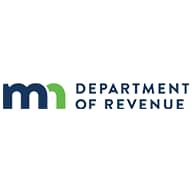We easily surpassed that goal since we’re virtually assured of same-day deposit for most types of checks.
Improving check and voucher processing
Another area for improvement was Revenue’s process for receiving, processing and depositing tax payments, which come into the department as a separate mailing from the tax returns. The department needed to replace its legacy remittance system for check processing.
With the previous check processing system, Revenue began by scanning all of the checks and vouchers. Every check and many vouchers were manually keyed. Once the transaction balanced, the department scanned each check and voucher again to encode the check. At the end of each day, Revenue used a courier service to hand-carry the paper checks to the bank for depositing, which meant the funds were not posted until at least the next day.
If there were fewer vouchers to choose from, Revenue felt customers would find it easier to choose the right voucher. In 2014, Revenue consolidated its vouchers. Before the consolidation effort, Revenue had 64 vouchers and shortly after, it went down to three. Since implementation, read rates and automated classification have improved significantly and deposit time has been reduced by 60 percent. The consolidation effort also improved Revenue efficiency and accuracy, requiring less work to program and maintain.
Solutions
ICS brought the department online with two IBML high-speed, high-capacity scanners, and migrated all of Revenue’s previous Captiva processes to OpenText™ Captiva Capture. To meet Revenue’s requirements for processing all tax returns, including business tax documents and electronic payments, Revenue extended its Captiva document capture environment to use the advanced document classification and data extraction capabilities of OpenText™ Captiva Advanced Recognition.
In order to add business tax returns to the overall Captiva capture process, ICS defined more than 800 document types via Captiva Advanced Recognition that identified the various business tax return documents, as well as required documentation for every type of business tax scenario. Once the entire return is scanned and intelligently classified, Captiva Advanced Recognition takes over and applies the business rules to determine whether if the return is complete and acceptable. If the return is missing certain documents or other information, Captiva Advanced Recognition automatically routes the document set to an appropriate workflow queue for further processing. This implementation resulted in 90 percent accuracy in handling all front-end correspondence associated to customer accounts—a significant improvement.
Comprehensive capture process flow for electronic check presentment
ICS integrated a customized Check 21 solution into Captiva that enabled any bank to accept and honor an electronic image of a check that is considered the legal equivalent of the original document. ICS partnered with Tangent Systems to integrate Tangent’s Deposit21® solution into Revenue’s Captiva capture solution. As a module within Captiva, Deposit21 handles the actual check transmission to the bank according to Check 21 guidelines.
Captiva classifies each document and sends check images off to the Deposit21 module, where the check amount is captured and validated. Captiva verifies that the check amount matches the amount due from the payment voucher; if different, Captiva automatically routes the return to Revenue for further processing. Once Captiva has determined the payment transaction is balanced, it releases the check to Deposit21 for electronic deposit and automatically determines the optimum method for transmitting the check to the bank.
Deposit21 formats, encrypts and transmits the electronic deposit files per each bank’s standards. When each file transmission is completed, the bank sends an acknowledgement file to Deposit21 confirming that the bank accepted the deposit credited to Revenue’s account and automatically creates a short-term archive of all check images to facilitate any adjustments for bank debits and credits such as NSFs.
 Minnesota Department of Revenue
Minnesota Department of Revenue